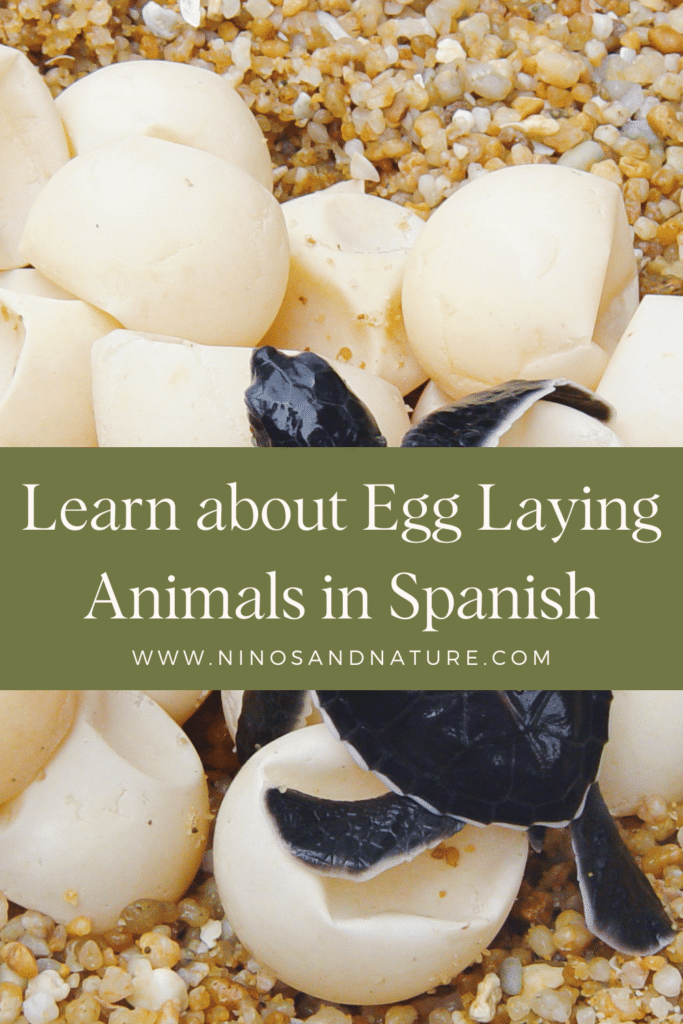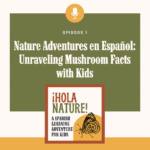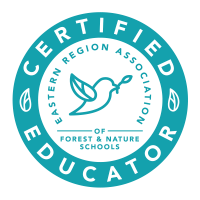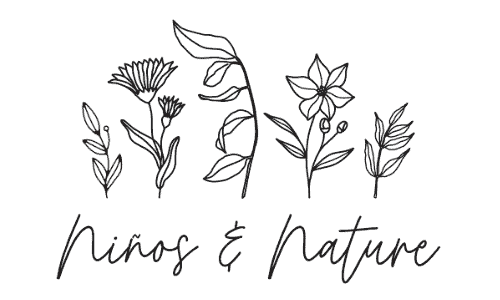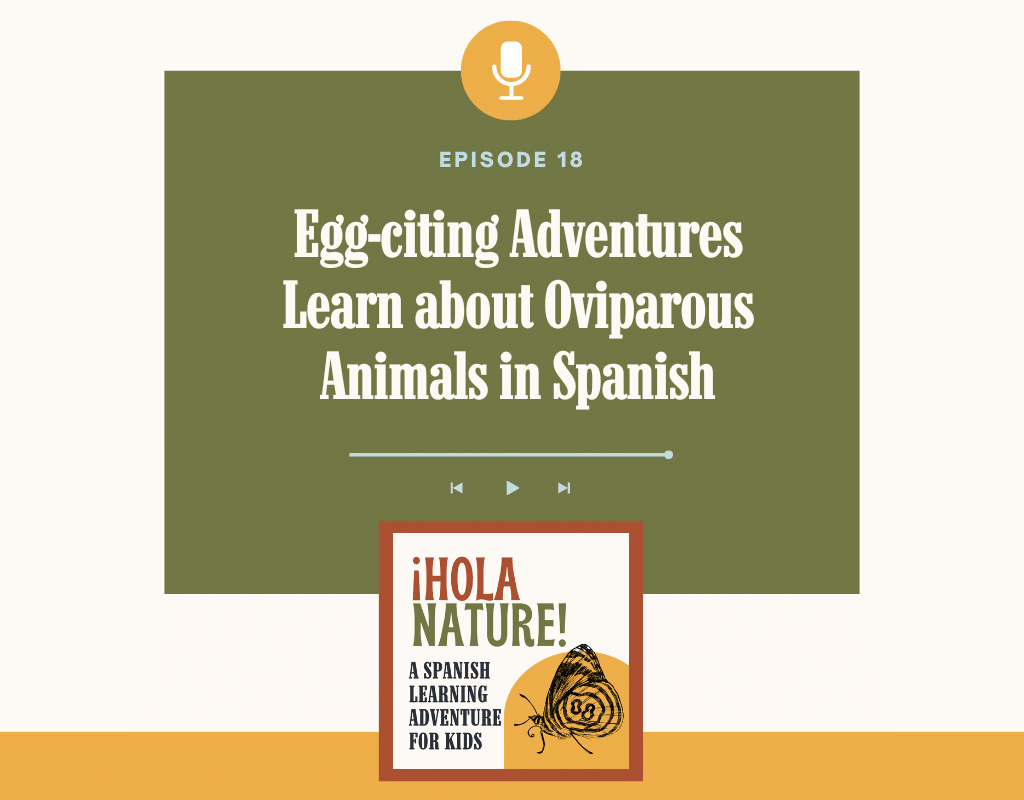
Oviparous Animals with Kids in Spanish – Free Spanish Animal Study
In this post: Learn all about oviparous animals in Spanish with kids with this free Spanish animal study! Post contains affiliate links.
Learning about nature and animals in Spanish is one of my favorite ways of teaching the language. One type of animal that can be particularly fascinating to study with kids are oviparous animals, or animals that lay eggs. In this blog post, I’ll dive into the world of oviparous animals, exploring different types and learning new Spanish vocabulary along the way.
From birds to reptiles, we will explore the fascinating world of animals that lay eggs. With interactive activities and free Spanish printables, children will have the opportunity to expand their knowledge of oviparous animals and the Spanish language. Whether you’re homeschooling, a bilingual parent looking for creative ways to immerse your children in Spanish, or you’re a Spanish teacher in need of free resources, this blog post is your guide to delving deeper into animal study en español!
Table of Contents
What are Oviparous Animals?
Before we go too far into our Spanish lesson, let’s make sure we fully understand what oviparous animals are! Oviparous animals are animals that lay eggs. These eggs develop and hatch outside of the mother’s body. This reproductive strategy is common among various species, including many types of birds, reptiles (such as snakes and turtles), amphibians (like frogs and toads), fish, insects, and some arachnids. In contrast, viviparous animals give birth to live young instead of laying eggs.
Oviparous Animal Facts for Kids in English and Spanish
Share these fun facts for kids to help them learn more about oviparous animals! You could also print out different facts and learn a new one each day.
– Oviparous animals lay eggs instead of giving birth to live babies.
– Eggs are usually laid in nests or hidden places to keep them safe.
– The mother may care for the eggs, keeping them warm until they hatch.
– Once the eggs hatch, baby animals emerge.
– Baby animals may look different from their parents when they hatch but will grow and change over time.
– Oviparous animals have special adaptations to help them lay and protect their eggs.
– Some oviparous animals, like birds, build nests to keep their eggs safe.
– Los animales ovíparos ponen huevos en lugar de dar a luz a bebés vivos.
– Los huevos suelen ser puestos en nidos o lugares escondidos para mantenerlos seguros.
– La mamá puede cuidar los huevos, manteniéndolos calientes hasta que se abran.
– Una vez que los huevos se abren, salen las crías.
– Los bebés pueden parecer diferentes de sus padres al nacer, pero crecerán y cambiarán con el tiempo.
– Los animales ovíparos tienen adaptaciones especiales para ayudarles a poner y proteger sus huevos.
– Algunos animales ovíparos, como los pájaros, construyen nidos para mantener seguros sus huevos.
List of Oviparous Animals in Spanish & English
Before we go any further, we need to learn useful Spanish vocabulary to help us talk more about Oviparous animals en español. Here are some key terms as well as a list of oviparous animals in English and Spanish! Don’t worry about learning this whole list all at once, especially if you’re teaching young kids. Start with just a few words at a time, and slowly incorporate more as you go.
Ovíparo (oh-BEE-pah-roh) – Oviparous
El huevo (el WEY-boh) – Egg
El nido (el NEE-doh) – Nest
La gallina (la gah-YEE-nah) – Hen
El pollito (el poh-YEE-toh) – Chick
El pato (el PAH-toh) – Duck
El pájaro (el PAH-hah-roh) – Bird* Typically a smaller bird that can fly
El ave (el AH-beh) – Bird *Any type of bird
La tortuga (la tohr-TOO-gah) – Turtle
La serpiente (la sehr-PYEHN-teh) – Snake
La lagartija (la lah-gahr-TEE-hah) – Lizard
El cocodrilo (el koh-koh-DREE-loh) – Crocodile
La rana (la RAH-nah) – Frog
El sapo (el SAH-poh) – Toad
La araña (la ah-RAH-nyah) – Spider
La hormiga (la or-MEE-gah) – Ant
La abeja (la ah-BEH-hah) – Bee
La mariposa (la mah-ree-POH-sah) – Butterfly
La libélula (la lee-BEH-loo-lah) – Dragonfly
El escarabajo (el es-kah-rah-BAH-hoh) – Beetle
El pez (el pehs) – Fish
El pingüino (el peen-GWEE-noh) – Penguin
La cigüeña (la see-GWEH-nyah) – Stork
El águila (el AH-gee-lah) – Eagle
El halcón (el ahl-KOHN) – Falcon
El cuervo (el KWEHR-boh) – Raven
El búho (el BOO-oh) – Owl
El colibrí (el koh-lee-BREE) – Hummingbird
La paloma (la pah-LOH-mah) – Dove
El loro (el LOH-roh) – Parrot
El avestruz (el ah-vehs-TROOS) – Ostrich
El emú (el EH-moo) – Emu
La codorniz (la koh-dor-NEES) – Quail
La tortuga marina (la tor-TOO-gah mah-REE-nah) – Sea turtle
La salamandra (la sah-lah-MAHN-drah) – Salamander
Spanish Poem for Kids about an Egg Hatching
Lorem ipsum dolor sit amet, consectetur adipiscing elit. Ut elit tellus, luctus nec ullamcorper mattis, pulvinar dapibus leo.
Amarillo es el patito…
Amarillo es el limón…
Amarillo es el pollito
Que sale del cascarón!
Rough Translation:
Yellow is the duckling…
Yellow is the lemon…
Yellow is the little chick…
That hatches from the shell!
My Favorite Books about Oviparous Animals
No animal study would be complete without engaging nature books for kids! Check out some of my favorite books about oviparous animals in Spanish and English.
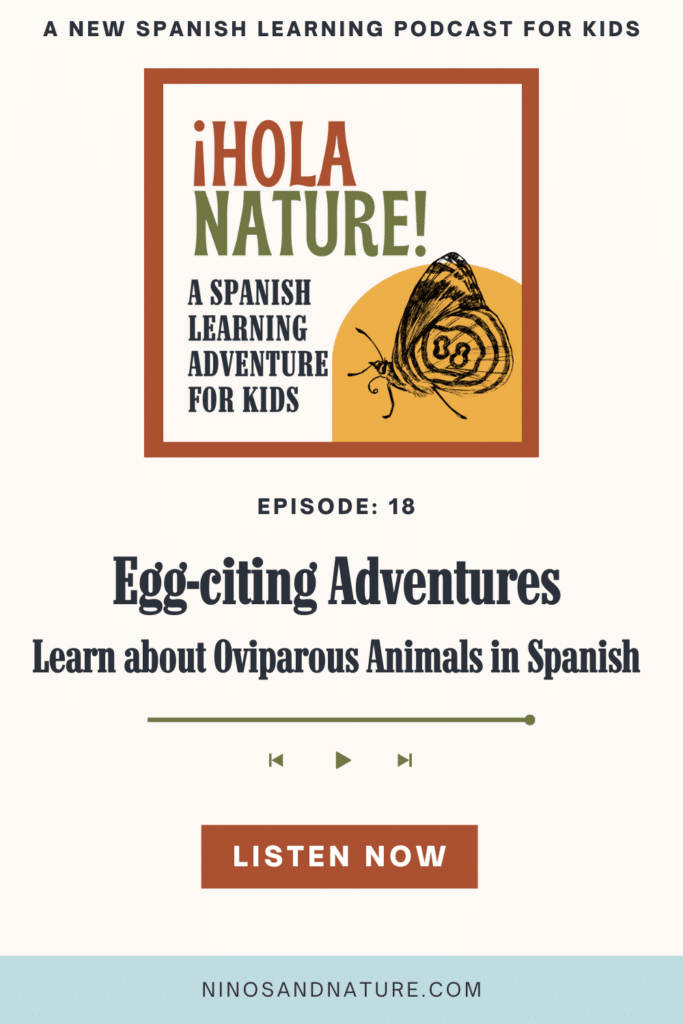
¡Hola Nature! A Spanish Podcast for Kids - Ep. 17 Oviparous Animals
Tune in to my Spanish podcast for kids all about nature! On this episode we’ll learn a Spanish poem for kids about animals that lay eggs, and learn some super cool nature facts about oviparous animals. Your kids will love visits from our silly characters like the forest fairies and my pesky hamsters. This is a really fun way for kids to learn Spanish in a low-pressure and fun environment.
Nature Based Spanish Curriculum
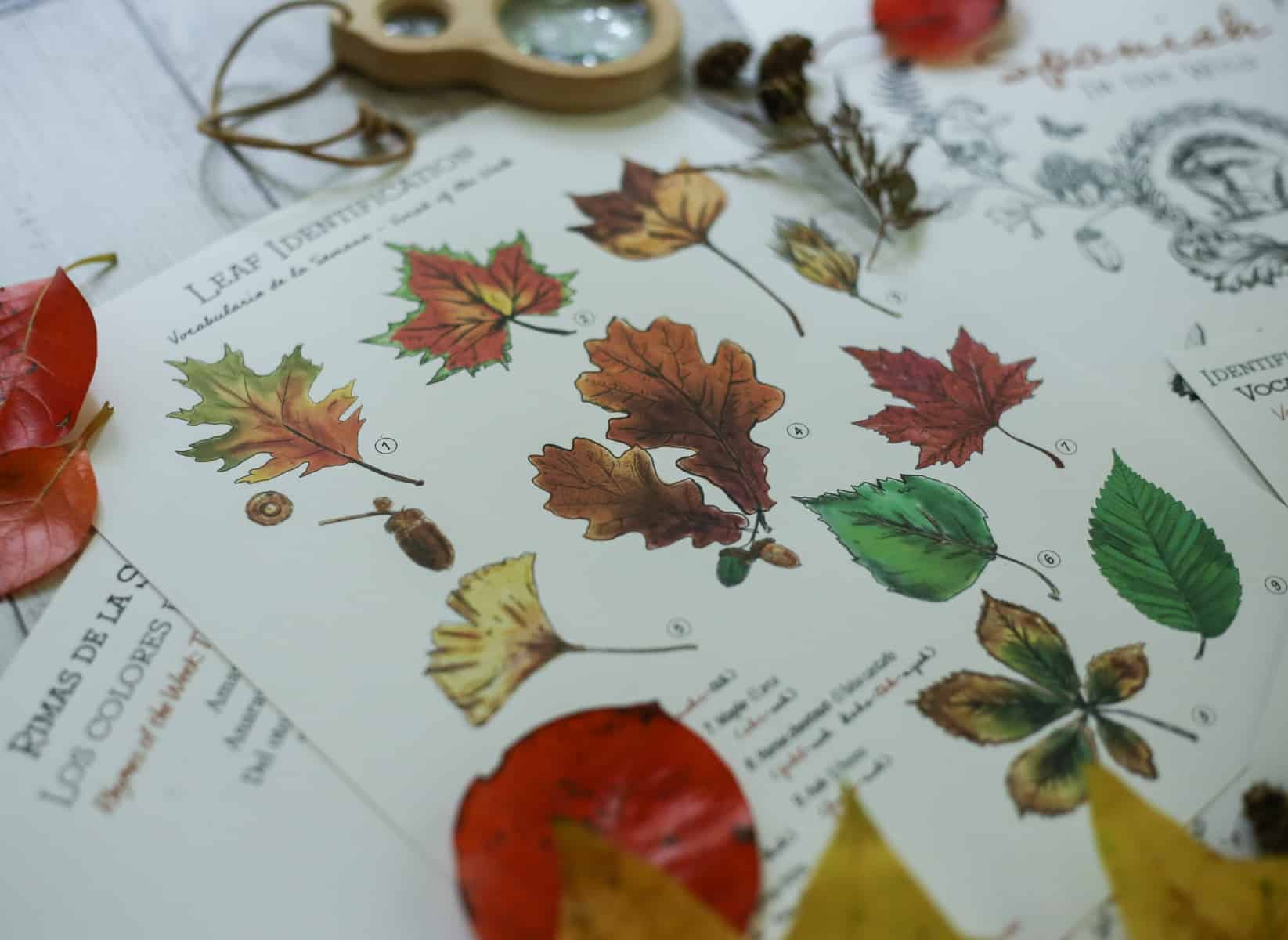
Explore the wonders of the natural world while mastering Spanish with my bilingual nature study curriculum. With native Spanish speaker audio guides, hand-illustrated posters, and interactive activities ranging from crafts to science experiments, your child will embark on an educational journey like no other. Learn more about Spanish in the Wild and take your language learning outside!
Spanish Videos about Oviparous Animals for Kids
Keep learning even more about oviparous animals in Spanish with your kids using these engaging videos! If your children aren’t fluent in Spanish, let them try watching the videos anyway. It is okay if they don’t understand everything, immersing children in the language with video is a great way to grow their Spanish skills.
I hope these resources help you as you learn more about oviparous animals with kids in Spanish! Check out more of my Spanish podcast episodes to keep learning about nature en español with me.
Like this post? Share it & Save it!
